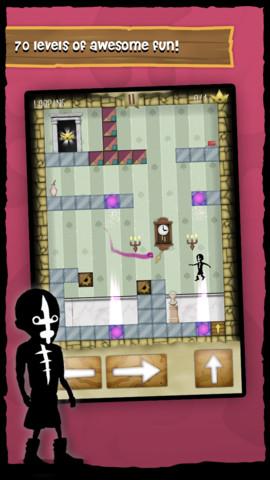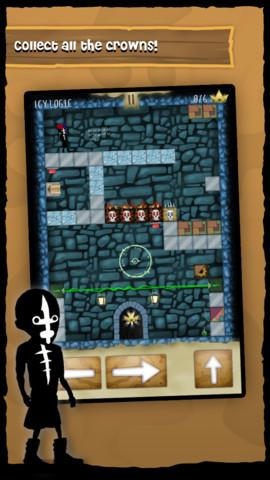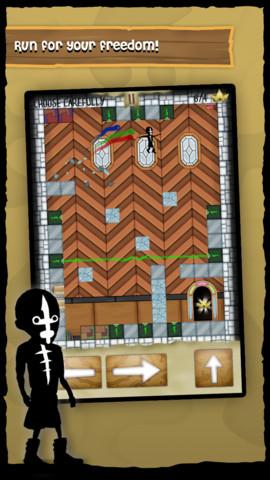- Wondering how to get Monopoly GO! free rolls? Well, you’ve come to the right place. In this guide, we provide you with a bunch of tips and tricks to get some free rolls for the hit new mobile game. We’ll …
Best Roblox Horror Games to Play Right Now – Updated Weekly
By Adele Wilson
Our Best Roblox Horror Games guide features the scariest and most creative experiences to play right now on the platform!The BEST Roblox Games of The Week – Games You Need To Play!
By Sho Roberts
Our feature shares our pick for the Best Roblox Games of the week! With our feature, we guarantee you'll find something new to play!Type Soul Clan Rarity Guide – All Legendary And Common Clans Listed!
By Nathan Ball
Wondering what your odds of rolling a particular Clan are? Wonder no more, with my handy Type Soul Clan Rarity guide.
Kyubo Review
Kyubo begins with our eponymous protagonist chained to a dungeon wall, unsure of how or why he’s there. Despite an appearance that should indicate an affinity for dungeons—Kyubo is either a reverse skeleton or a man in a bondage suit—our confused hero quickly frees himself with a nearby key and begins searching for a way out. His journey outside will require platforming, puzzle-solving, and patience, but it’s an escape well worth making.

A mesmerizing puzzle-platformer that excels despite shaky controls.
Kyubo begins with our eponymous protagonist chained to a dungeon wall, unsure of how or why he’s there. Despite an appearance that should indicate an affinity for dungeons—Kyubo is either a reverse skeleton or a man in a bondage suit—our confused hero quickly frees himself with a nearby key and begins searching for a way out. His journey outside will require platforming, puzzle-solving, and patience, but it’s an escape well worth making.
Kyubo’s path to freedom is impeded by 70 rooms filled with obstacles, dangers, and history of the labyrinthine dungeon itself. As he progresses towards the surface, the spirits of four prior captives will join and assist him, providing the crucial ability to move and alter colored blocks that are abundant throughout the tower.
Ranging in size from singular cubes to various Tetris-esque shapes, these blocks often act as both stoppers and steps that Kyubo must get past and utilize to reach each room’s exit. While some blocks must merely be moved out of the way to the exit, many others must be used to flip switches, shield from dangers, or transport Kyubo to unreachable locations. Each block acts like a Sokoban ice cube when moved, sliding in one direction until it collides with another object or wall. Thus, even if a block only needs to travel a short distance, it might require multiple movements from the spirits if there is nothing—or too many things—in its path.
Luckily, Kyubo is free to call upon his spirit helpers as often as he’d like. Each spirit specializes in one type of movement, such as red who can move blocks vertically, or blue horizontally. When Kyubo uses a spirit for any change to a block—whether it’s red moving a block up or green rotating it 90 degrees—it counts as one move. While Kyubo can use an unlimited number of moves to reach the exit and the next room, only the fewest number will award him a golden crown for that stage.
Many of the shortest solutions in Kyubo require a combination of spirit-guided puzzle solving and precise platforming. When not actually selecting a directive for a spirit, Kyubo is able to run and jump freely without costing a “move,” even as blocks are sliding around a level. This is critically important on stages which require Kyubo to time jumps or falls perfectly to land on the safety of a block, not the painful demise of a spike. Some stages can even be solved with only platforming prowess, resulting in a pride-inducing zero moves used.
Most of the time, though, Kyubo and his spirits must combine their skills to reach the exit. This is exhilarating on most stages, and infuriating on others. On its puzzle-heavy stages, Kyubo features ingenious challenges that will make you gasp in delighted shock once solved. However, stages that require precision movement from Kyubo himself are a recipe for frustration. Our floppy hero moves with ragdoll fluidity: in a block-based prison, this means Kyubo often ends up teetering on the edge of a block with even the slightest tap of the controls. I’ve personally died to the following numerous times each: Kyubo’s toe was sticking out and got squished by a block; he fell from a usually safe height but one leg was tilted slightly; he jumped over a flaming block but one hand hit the fire. At other times, Kyubo is simply unresponsive or unpredictable; on an especially challenging level, I entered a teleporter at least 50 times, jumping upon exit. This should cause Kyubo to gain height and speed, but only if the jump button is pushed at the exact right moment—and only if it actually registers correctly.
Kyubo’s unpredictable movement would be less frustrating if Kyubo featured an “undo last” button or some sort of checkpoint system. Unfortunately, many stages require multiple block movements—ranging anywhere from one to 21 moves—followed by crafty platforming from Kyubo. Almost always, the failure point is Kyubo’s platforming, meaning you’ll have to replay the entire stage—and move those blocks another 20+ times—each time Kyubo dies, whether it’s due to your own error or the game’s.
While these issues caused me to yell at Kyubo beyond the legal limit for gamer rage, I kept coming back for more. Besides its brilliantly challenging, but never too difficult puzzles—especially the latter half, which focuses more on block-sliding than Kyubo-jumping—the entire experience is simultaneously soothing and uneasy. The mystery of Kyubo’s imprisonment and the small bits of info received along the way, set against atmospheric piano tones, are eerily enticing. The crown system provides encouragement to retry levels without being forced to perfect them before moving on. Finding alternative solutions to those levels, like using a moving block as a laser shield, is an absolute joy that cannot be understated. At its best, Kyubo requires precise planning and execution to make magical “aha!” moments a reality; these moments are its legacy, and what Kyubo will be remembered for long after he’s tumbled out of the tower.

The good

The bad
More articles...
Monopoly GO! Free Rolls – Links For Free Dice
By Glen Fox
Wondering how to get Monopoly GO! free rolls? Well, you’ve come to the right place. In this guide, we provide you with a bunch of tips and tricks to get some free rolls for the hit new mobile game. We’ll …Best Roblox Horror Games to Play Right Now – Updated Weekly
By Adele Wilson
Our Best Roblox Horror Games guide features the scariest and most creative experiences to play right now on the platform!The BEST Roblox Games of The Week – Games You Need To Play!
By Sho Roberts
Our feature shares our pick for the Best Roblox Games of the week! With our feature, we guarantee you'll find something new to play!Type Soul Clan Rarity Guide – All Legendary And Common Clans Listed!
By Nathan Ball
Wondering what your odds of rolling a particular Clan are? Wonder no more, with my handy Type Soul Clan Rarity guide.








 “
“ “
“